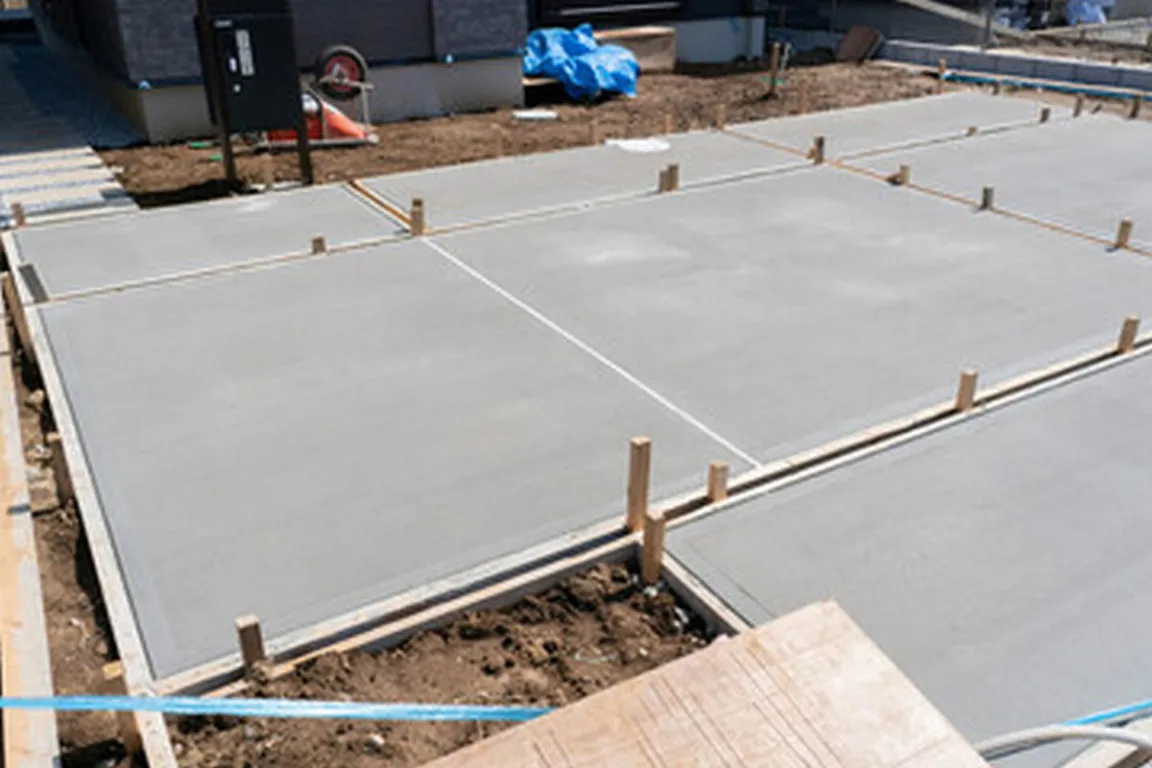Various new construction engineering techniques are increasingly appearing to support building construction projects with specialized structures, such as high-rise buildings and commercial buildings. In addition to the engineering, several important elements are also required, one of which is the slab.
A slab is a horizontal construction element that functions as the base for a building floor. This article will explain what a slab is, from the definition to the considerations in making a slab. To understand it thoroughly, read the following explanation!
What Is Slab?
A slab is a construction element that forms the base of a building structure. Therefore, it consists of horizontal components.
The existence of the slab is to bear various types of loads, then distribute them to the buffer structure. The goal is to make the building structure more rigid and stronger. The slab can be made using plain concrete, reinforced concrete, or precast concrete.
Benefits of Concrete Slabs
Concrete slabs are widely used in construction projects, whether in floors, roofs, ceilings, or general infrastructure. This is because concrete slabs have a variety of benefits as follows.
- Maintains the strength to withstand loads.
- Protects against fire.
- Facilitates the cleaning and maintenance process.
- Helps regulate indoor temperature.
- Provides designers and architects with the opportunity to create a diverse range of aesthetic looks.
- Achieves cost efficiency because it has good durability and does not require intensive maintenance costs.
- Acts as a sound insulator and reduces sound that could potentially disturb other residents.
Read also: Get to Know Earthquake-Resistant Building Materials
Types of Slabs
There are several types of slabs with different characteristics and applications. The following are the types of slabs that are commonly used in construction projects:
1. One-Way Slab
A single slab is a type of slab that supports unidirectional loads. This type of slab uses beams on two opposite sides. In general, single slabs are used in building structures where the load is equally distributed. One way slabs can be found on balconies and terraces.
2. Two-Way Slab
If a single slab plays a role in supporting one-way loads, then the two-way slab is the opposite. This type of slab consists of two layers to support two-way loads, both in length and width. Double slabs can have a square or rectangular shape.
When compared to a single slab, this double slab has a stiffer structure and is more efficient in distributing loads. Double slabs are a suitable choice to be applied to multi-storey building structures.
3. Flat Slab
This type of slab does not use beams or columns as supports. So, it is not surprising that the surface appearance is relatively flat. This is why some large spaces with significant loads, such as parking lots and warehouses, choose blunt concrete slabs.
4. Ribbed Slab
A ribbed slab is designed with a cross-section that is larger than a regular concrete slab. The cross section of this slab generally has a shape similar to a beam or T beam.
The advantage of ribbed slabs is their ability to give maximum structural support over a wider distance without compromising their stability. So, this type of slab is very suitable if applied to constructions that have large rooms, such as meeting rooms and sports arenas.
5. Waffle Slab
The last type of concrete slab is a waffle slab, which is a slab that looks like a waffle or grid. Visually, waffle slabs have unique holes and are able to support structural strength and aesthetics.
One of the advantages of waffle slab is its wide span, making it suitable for buildings that span a wide area, such as auditoriums, exhibition halls, and commercial buildings that apply the concept of open space.
Considerations in Slab Manufacturing
As with any other process, in making a slab, you have to consider a variety of important things. Some of the things that must be considered in the slab-making process are:
1. Additional Dead Load
Additional dead load is a load that is not sourced from the main structure, but rather permanently added to the building, which can be in the form of tiled floors, permanent water tanks, and partition walls.
When constructing the slab, this load must be taken into the calculation as it involves an addition to the total load.
2. Self-Weight
Self-weight refers to the weight of the slab itself. This type of load is always persistent as long as the building is standing. Self-weight needs to be carefully calculated with due reference to the type and volume of material.
3. Traffic Weight
Traffic weight refers to the load that comes from human use or activity and is variable. Examples of traffic loads include tables, machines, cabinets, and people passing through the building area.
Because its existence is not constant, the calculation of this type of weight refers to technical standards, such as the Indonesian National Standard (SNI) or international structural rules.
Slab Thickness Based on Its Function
Slab thickness is different. There are various factors that make the slab thickness different, including the type of building, the type of load, and the construction regulations in the construction area. When referring to its function, slab thickness can follow these guidelines.
- Residential: 4–4 inches or about 100–150 mm.
- Concrete roads: 4–6 inches or about 100–150 mm.
- Floor heating system: 1–2 inches or about 25–50 mm.
- Parking lot floor: 8–12 inches or about 200–300 mm.
- Industrial floors: 6–12 inches or about 150–300 mm (depending on the type of industry and the loads involved).
- High-rise buildings and commercial buildings: 6–8 inches or approximately 150–200 mm (depending on load and design specifications).
Read also: Advantages of Concrete Road Casting and Its Construction Process
That is all the explanation of what a slab is, its benefits, types, thickness, and considerations in making it. Slab is a reliable material with high durability. If you are involved in a big project, a slab is certainly a basic element that must be present.
Considering the big role of slabs, you also need to choose an easier manufacturing method to save time, for example, by using superior concrete products from Semen Merah Putih.
Through one of its subsidiaries, Beton Merah Putih, Semen Merah Putih supplies innovative ready-mixed concrete products designed for a variety of unique and strong applications with its superior products, such as Ready Mix Concrete and Precast Concrete.
Precast concrete from Beton Merah Putih offers optimal compressive and tensile strength. The production process uses modern precast machines, so that it has high-quality standards. This superior product is suitable for building construction, infrastructure, and architectural decoration.
If you want to get complete information about Precast Concrete or other Semen Merah Putih products, do not hesitate to contact us immediately. You can also consult with our team to choose the type of concrete that is high-quality and suitable for your project!
Read also: Building Construction: Definition, Types, and Stages



